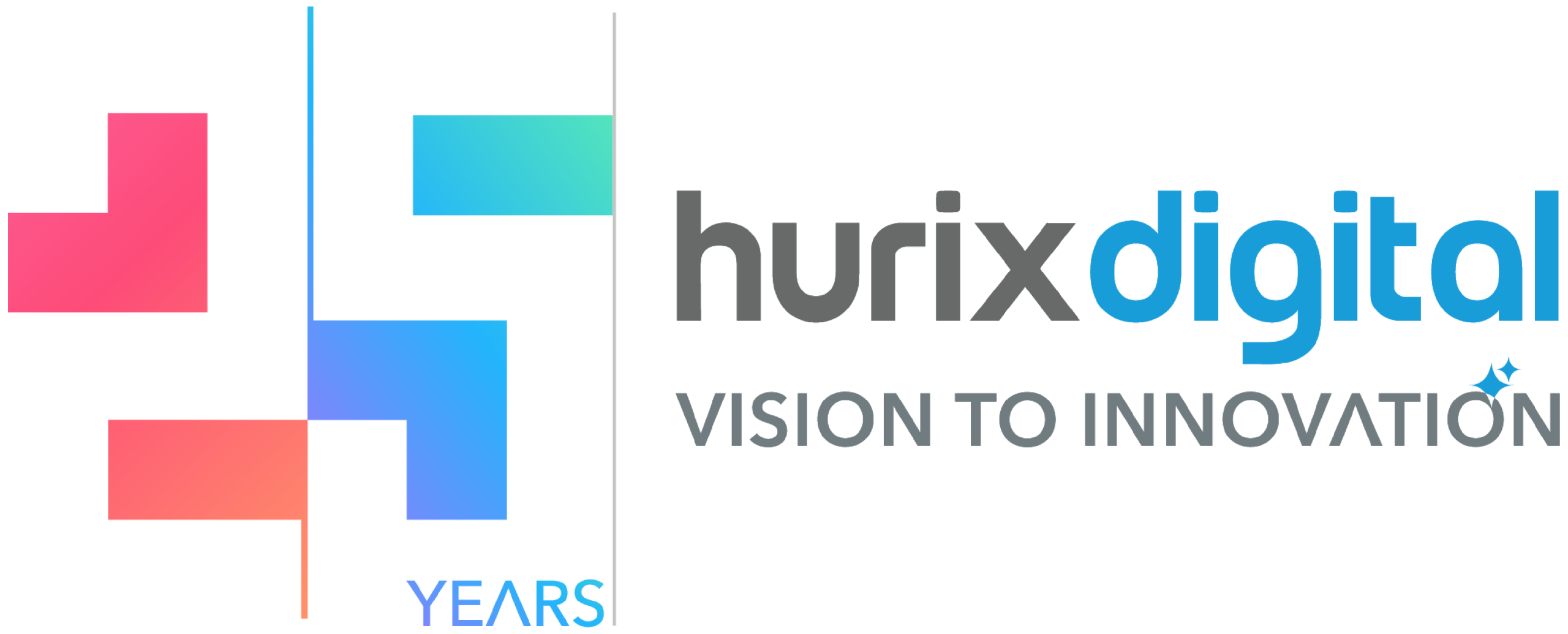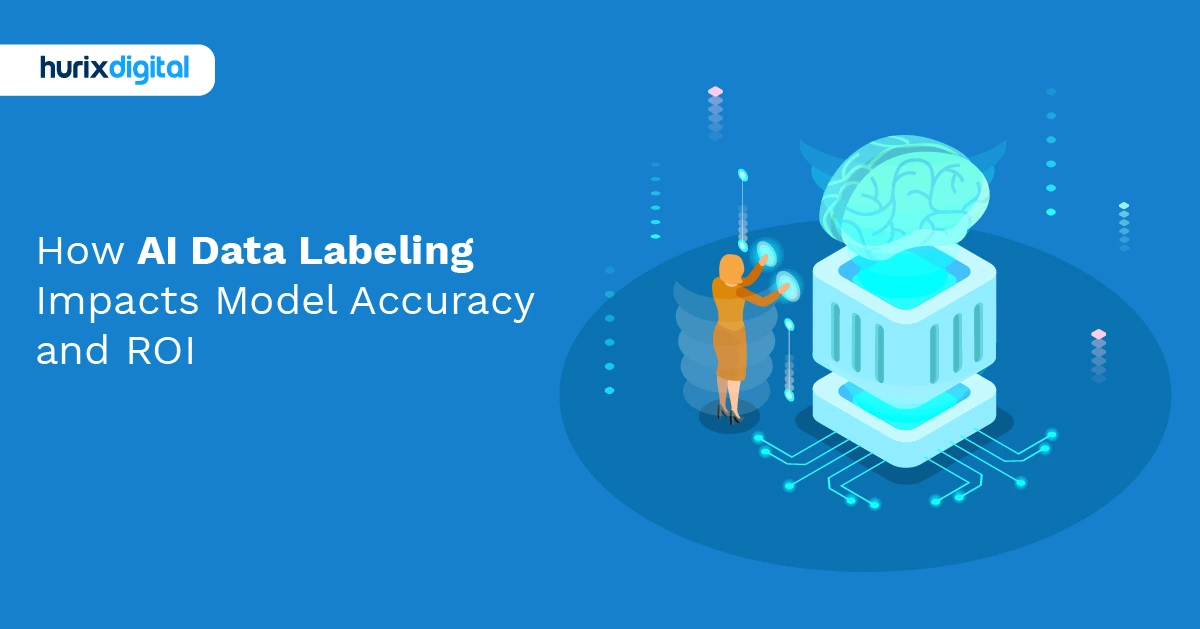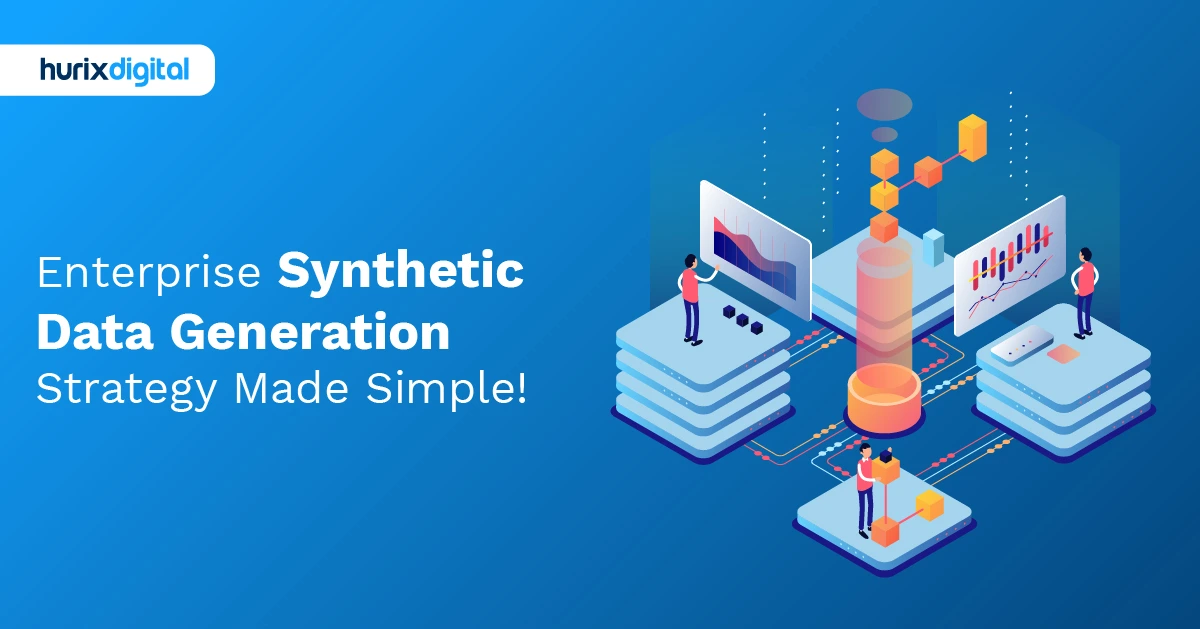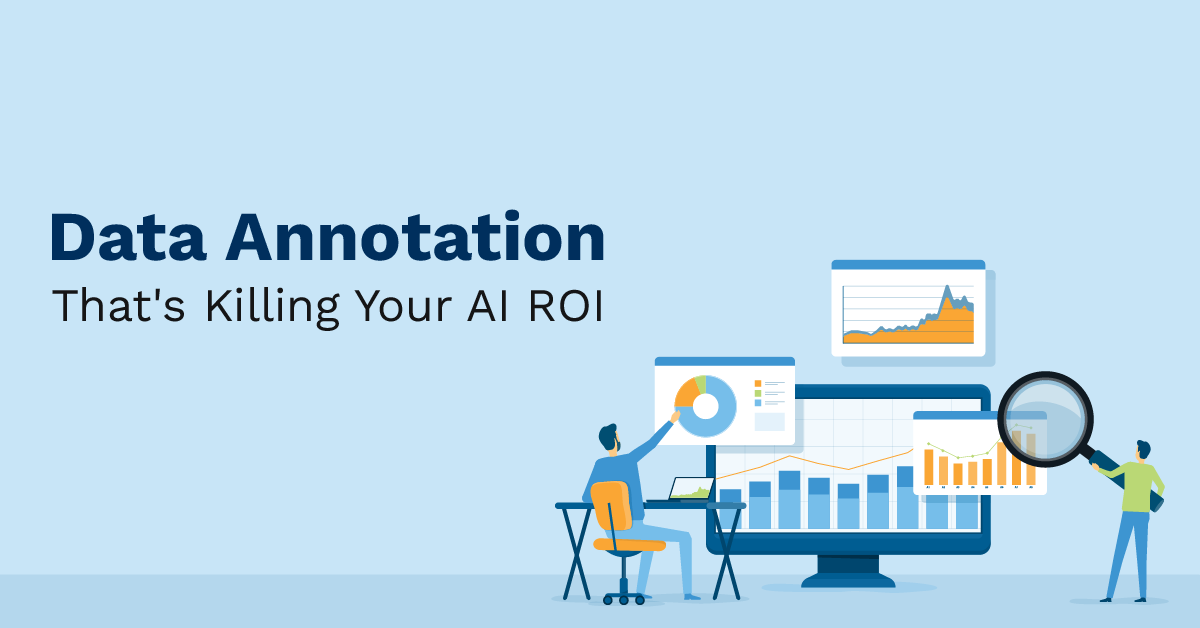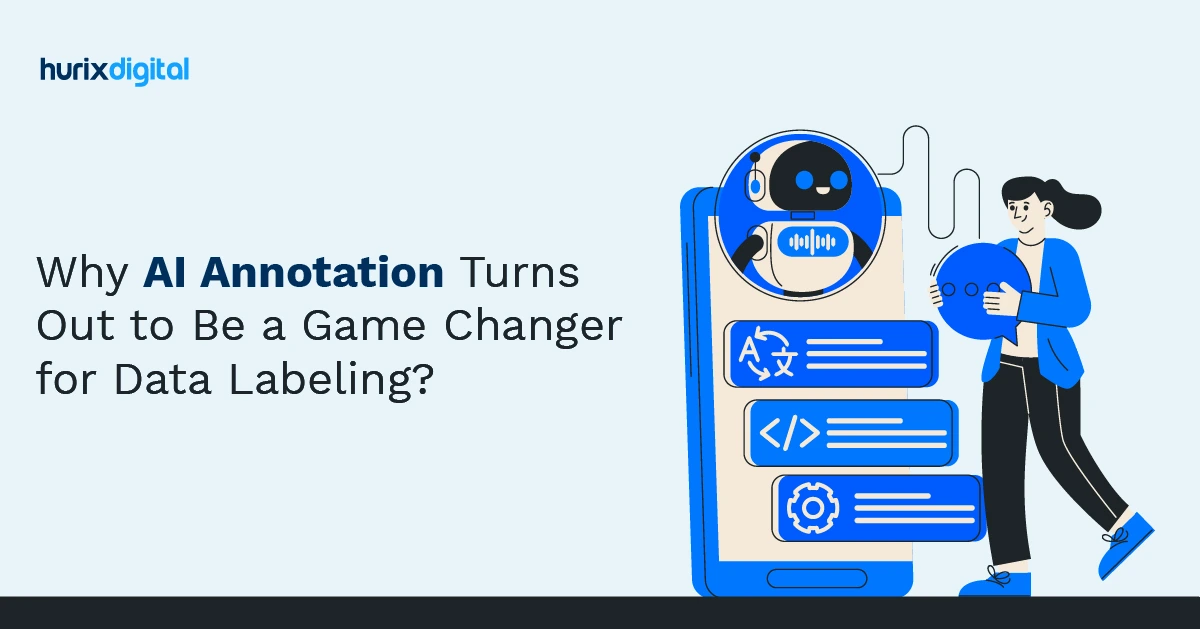
Why AI Annotation Turns Out to Be a Game Changer for Data Labeling?
Here’s something they don’t tell you at AI conferences: Behind every “groundbreaking” computer vision model, there’s probably someone in a warehouse somewhere drawing boxes around cats at 2 AM. Welcome to the glamorous world of AI annotation, where we teach machines to see by showing them millions of examples like the world’s most patient kindergarten teacher.
The overlooked reality is that meticulous annotation is the foundation of any AI initiative. Mess up the annotation, and your million-dollar model becomes an expensive random number generator. Let’s discuss what truly matters when you’re paying people to label your data.
Table of Contents:
- What Is the True ROI of Your AI Annotation Investment?
- How Do You Ensure Superior AI Annotation Data Quality Consistently?
- Scaling AI Annotation: What Are the Biggest Hidden Challenges?
- Optimizing AI Annotation Costs Without Sacrificing Performance: Real Strategies?
- How Do Leaders Effectively Mitigate Bias in AI Annotation Datasets?
- Choosing the Right AI Annotation Platform or Vendor: Key Criteria?
- Securing Sensitive Data Throughout the AI Annotation Process Lifecycle?
- What Is the Evolving Role of Human-in-the-Loop AI Annotation?
- Which Emerging Trends Will Revolutionize Future AI Annotation Processes?
- How Does AI Annotation Strategically Align With Core Business Objectives?
- The Reality Check
What Is the True ROI of Your AI Annotation Investment?
ROI calculations tend to induce significant discomfort among data scientists, who see the acronym the way an allergic person views pollen. The source of the anxiety is straightforward: quantifying the financial return associated with the labor-intensive task of generating labeled bounding boxes defies the same logic applied to capital expenses like a stamping press. The press’s contribution is clear: measure the output of uniform parts against the amortized costs, and the math reveals profit. Sanitized and transferable, its productivity speaks the same language the boardroom speaks. The labor-intensive subtasks of computer vision, however, elude the same tidy accounting.
Most companies screw up by looking at annotation costs in isolation. “We spent $100K on labeling data.” Okay, but what did that enable? If those labels trained a model that catches manufacturing defects 0.1 seconds faster, saving you from shipping 10,000 faulty products, suddenly that $100K looks like pocket change.
Good annotations create compound value. That dataset you labeled for detecting pedestrians? With minor additions, it trains models for cyclist detection, road sign recognition, and weather condition classification. One investment, multiple models. It’s like buying a Swiss Army knife instead of individual tools.
Quality multiplies everything. Crappy annotations mean your model needs more training time (expensive), more data (more expensive), and still performs worse (costly mistakes). The smart play here is to track end-to-end metrics. Not “cost per labeled image” but “cost per percentage point of model accuracy” or “annotation investment per customer satisfaction point increase.” Because that’s what matters to your business, nobody gives a damn about your labeling budget. They care about whether your AI actually works.
How Do You Ensure Superior AI Annotation Data Quality Consistently?
Quality in annotation is like the skill that goes into making good sushi: the good parts may go unnoticed by someone who isn’t trained, but the bad parts are clear and often hurtful. Like a bad meal, careless annotation can have effects that are hard to undo and can ruin the whole project.
The first problem? Humans are inconsistent creatures. Ask five people to label “cars” in an image, and you’ll get five interpretations. Is that van a car? What about that half-visible vehicle? The pickup truck? Without clear guidelines, your annotators are playing Calvin Ball with your data.
Here’s what actually works. First, instructions that would make IKEA jealous. Not “label all cars” but “Label all four-wheeled passenger vehicles, including sedans, SUVs, and pickup trucks, but excluding commercial trucks over 10,000 pounds. Include partially visible vehicles if more than 50% is shown.” Specific. Measurable. No wiggle room.
But instructions aren’t enough. You need quality control that’s borderline paranoid. The companies doing this right use multiple layers. Spot checks on random samples. Full reviews of critical data. Training matters more than most realize. Don’t just throw people at labeling tools and hope for the best. Show them examples of perfect annotations. More importantly, show them common mistakes. “See how this annotator included the car’s shadow? Don’t do that.” “Notice how they missed the partially hidden pedestrian? Always check edges.” Real examples stick better than abstract rules.
The tech side helps, too. Good annotation platforms catch obvious errors, such as boxes that are too small, labels that don’t match the schema, and suspicious patterns. However, don’t rely solely on technology. The best quality comes from combining human judgment with technical validation. Trust, but verify. Then verify again.
Scaling AI Annotation: What Are the Biggest Hidden Challenges?
Scaling annotation is like trying to cook Thanksgiving dinner for 500 people in your home kitchen. What worked for your pilot project falls apart spectacularly when you need millions of labels.
First reality check: scaling isn’t just “hire more people.” We have seen one startup try this. They went from 10 annotators to 100 overnight. There was a massive drop in quality, costs exploded, and they had to spend months cleaning it up. It’s like assuming ten programmers can write code ten times faster than one. In reality, they’ll probably create ten times the bugs.
The coordination overhead kills you. With 10 annotators, you can have daily standup meetings. With 1,000? Good luck. Every communication becomes a game of telephone. Instructions get misinterpreted. Standards drift. Before you know it, your annotators in different locations are essentially labeling different datasets.
Tool limitations bite hard at scale. That annotation platform that worked great for your pilot? It might choke when 500 people try to use it simultaneously. Download speeds matter when you’re moving terabytes of data. Version control becomes critical when multiple teams work on interconnected datasets. Quality control doesn’t scale linearly either. Reviewing 10% of annotations is feasible with small datasets. With millions of labels? You need statistical sampling strategies, automated quality checks, and trust metrics for annotators. However, automated checks often miss subtle errors that can significantly impact model performance. It’s a constant balance between thoroughness and practicality.
The real killer? Maintaining consistency as you scale. Early annotators develop institutional knowledge. They know why certain edge cases are labeled specific ways. New annotators don’t have that context. Documentation helps, but isn’t enough. You need systematic knowledge transfer, regular calibration sessions, and ways to propagate learnings across your entire annotation workforce. Otherwise, your scaled operation produces garbage at impressive speeds.
Optimizing AI Annotation Costs Without Sacrificing Performance: Real Strategies?
Let’s talk money because annotation costs can eat your AI budget faster than a teenager raids the fridge. But here’s the thing. Cutting costs the wrong way is like buying cheap parachutes. Saves money right up until you need them to work.
Here’s what works: tiered annotation strategies. Simple tasks go to lower-cost annotators. Complex edge cases go to experts. Utilize your skilled personnel for quality control and training, rather than bulk labeling. Everyone works at their highest value.
Technology amplification is where you get real leverage. Pre-annotation with existing models significantly reduces labeling time. Instead of drawing boxes from scratch, annotators adjust AI-generated labels. Why waste money labeling obvious examples when you can focus on edge cases that improve model performance through active learning?
But here’s our favorite trick: collaborative annotation. Instead of having one person label everything in an image, split the tasks. One person handles bounding boxes, while another handles classifications. Assembly line style. Each person gets really good at their specific task. Quality improves, speed increases, and costs decrease. Win-win-win.
How Do Leaders Effectively Mitigate Bias in AI Annotation Datasets?
An AI annotation biased by bias, like garlic in cooking, ruins everything if too much is used. And unlike garlic, you can’t smell bias coming. It sneaks in through a thousand tiny decisions.
The obvious biases everyone talks about? Geographic and demographic. Are your annotators mostly young urban males? What perspectives are missing from your labels? But that’s just the start. The real insidious stuff happens at the task level.
Example time. Fashion retailer building a “professional attire” classifier. Annotators labeled suits and ties as professional. Saris and hijabs? Casual. Nobody explicitly decided to be biased. But annotators’ implicit assumptions about “professional” created a discriminatory model. Now imagine that AI is screening job applications.
Temporal bias is sneaky. Annotators label based on the current context. COVID made everyone label face masks as normal. Pre-2020 datasets labeled them as medical or suspicious. Models trained on outdated annotations fail in today’s reality. One security company had to relabel years of footage because their definitions of “suspicious behavior” had become normal behavior overnight.
The hardest part? Some bias is necessary. In medical AI, false positives should be prioritized over false negatives. Security systems should be designed to prioritize the detection of threats. The key is conscious, documented, justified bias versus unconscious prejudice. Know your biases, choose them deliberately, and constantly question whether they’re still serving their purpose.
Choosing the Right AI Annotation Platform or Vendor: Key Criteria?
An annotation platform is like dating: everyone looks good in their profile pictures, but you don’t find out what’s important until you’re committed. And switching annotation platforms mid-project? That’s the expensive divorce.
Speed matters, but not how vendors measure it. They’ll show you how fast one expert annotator can label in perfect conditions. Ask instead: How fast can 100 mediocre annotators label messy real-world data while maintaining quality? What’s the learning curve? One platform might be 2x faster per image but take 3x longer to train people. Do the math on YOUR timeline.
Integration capabilities separate toys from tools. Your annotation platform needs to play nice with your data storage, your ML pipelines, and your quality control systems. “API available” isn’t enough. Is it a real API or a halfhearted afterthought? Can it handle your data volumes without choking? Also, remember that flexibility beats features. Your annotation needs will change. Guaranteed. The platform that forces you into rigid workflows will become a straitjacket. Can you create custom label types? Modify quality control rules? Add validation logic? The best platforms feel more like frameworks than finished products. They grow with you instead of constraining you.
Support quality matters more than you think. When your annotation team is blocked at 2 AM because the platform is glitching, “submit a ticket and we’ll respond within 48 hours” doesn’t cut it. Real support means actual humans who understand your use case, not script readers. Check their documentation too. If it sucks during evaluation, it’ll be useless during a crisis.
Securing Sensitive Data Throughout the AI Annotation Process Lifecycle?
Security in annotation resembles wearing pants. You forget about it until something goes wrong, and then it becomes really, really bad. The horror stories pile up, but NDAs keep the details locked away.
People often overlook the fact that annotation security goes beyond hackers. You manage hundreds or thousands of people who need access to your sensitive data just to label it. Every annotator is a potential leak point, not because they’re malicious (mostly) but because security is hard and humans are human.
The nightmare scenario? Medical images with patient info visible. Financial documents with account numbers. Security footage showing sensitive locations. Access control needs to be granular and auditable. Not just “annotators can see data” but “annotator X can see dataset Y between times A and B from IP address C.” Log everything. Who viewed what when? Who downloaded anything? Who spent suspiciously long on certain images. Paranoid? Maybe. But lawsuits are expensive.
Data minimization is your friend. Why show annotators full-resolution images when lower resolution works for labeling? Why include metadata they don’t need? Strip EXIF data. Blur irrelevant regions. One smart approach: synthetic data for training annotators. They learn from fake examples, only see real data when necessary.
The human element is usually the weakest link. Annotators taking photos of screens. Sharing login credentials. Working from insecure locations. Use virtual desktops, disable screenshots, and watermark everything. But you also need training, monitoring, and consequences.
Encryption isn’t optional—data at rest, data in transit, data in use. However, companies often overlook the fact that encrypted data is useless if everyone has the keys. Key management, access rotation, and the principle of least privilege. The mundane details that prevent exciting disasters.
What Is the Evolving Role of Human-in-the-Loop AI Annotation?
Human-in-the-loop (HITL) annotation may sound fancy, but it essentially acknowledges that AI isn’t yet fully capable. Artificial intelligence’s training wheels are now necessary, but everyone hopes they’ll eventually be taken off. Spoiler alert: those training wheels aren’t coming off anytime soon.
The evolution is fascinating, though. Five years ago, HITL meant humans doing everything while AI watched and learned. Now? It’s more like a dance. AI proposes, humans dispose. The machine attempts to label, and humans correct the errors. Sounds simple until you realize the AI improves and the errors become subtler. Yesterday’s annotators, who could spot obvious mistakes, need to become quality inspectors, catching edge cases.
The real shift? Annotators are becoming AI trainers. They’re teaching machines how to think rather than just labeling data. When an annotator corrects an AI’s mistake, that feedback loops back to improve the model.
Active learning changes the game entirely. Instead of randomly labeling data, the AI identifies which examples would help it learn fastest. “Hey, human, I’m really confused about this image. Help?” It’s efficient but psychologically draining for annotators. Imagine encountering only the most challenging problems in your field—burnout city.
Power dynamics are shifting, too. Good annotators who understand AI behavior become incredibly valuable. “The model consistently mistakes this pattern because…” That insight is worth more than a thousand labeled images. Smart companies are recognizing this, creating career paths from annotator to AI specialist.
Which Emerging Trends Will Revolutionize Future AI Annotation Processes?
Synthetic data is the elephant stampeding toward us. Why pay humans to label real data when AI can generate pre-labeled fake data? It’s already happening in autonomous vehicles—simulated driving scenes with perfectly labeled data. No annotation needed. The catch? Synthetic data is like lab-grown meat. Getting better fast, but still doesn’t quite taste right. Models trained solely on synthetic data tend to fail in unexpected ways when they encounter reality.
Self-supervised learning promises to kill annotation entirely. Models that learn from unlabeled data, finding patterns without human guidance. Sounds great until you realize “patterns” might mean “spurious correlations that make no damn sense.” Few-shot learning is gaining traction as the middle ground. Instead of labeling millions of examples, label dozens and let AI extrapolate. It’s working surprisingly well for specific tasks.
Real-time annotation is coming whether we’re ready or not. Instead of batch labeling, continuous streams. Annotators work alongside live systems, correcting mistakes as they happen. It’s happening in content moderation, fraud detection, anywhere decisions can’t wait. The infrastructure challenges are daunting, but the business value is undeniable.
The regulation hammer is coming down hard. As AI increasingly impacts lives, governments are seeking accountability. That means traceable annotations, auditable processes, and explainable decisions. The wild west days of “just label it however” are ending. There will be more documentation, validation, and compliance with annotation in the future.
Edge annotation is the trend nobody’s talking about enough. Instead of sending data to central locations for labeling, annotate where the data is created. Privacy-preserving, latency-reducing, cost-saving. But it requires entirely new tooling and workflows. The companies that figure this out now will have a massive advantage.
How Does AI Annotation Strategically Align With Core Business Objectives?
Smart alignment begins with understanding that annotation quality directly impacts a company’s competitive advantage. Your competitor’s AI can’t tell the difference between a cat and a dog? Their loss. But if YOUR AI makes those mistakes because you cheaped out on annotation? That’s customers walking out the door.
The strategic play is connecting annotation metrics to business key performance indicators (KPI). Not “labels per hour” but “customer satisfaction improvement per annotation dollar spent.” By investing in better content tagging annotations, streaming services don’t buy labels; they buy reduced churn. When a medical device company invests in precise annotation, it’s buying FDA approval and market access.
Competitive intelligence through annotation is underutilized. Your annotation team sees thousands of examples from your domain. They notice patterns, trends, and emerging issues before anyone else. Smart companies tap this intelligence. Annotators are becoming early warning systems for market shifts. “Hey, we’re seeing way more electric scooters in urban scenes lately.” That’s strategic gold if you’re in the transportation industry.
The long game matters most. Today’s annotation investment creates tomorrow’s data moat. The company with ten years of carefully annotated domain-specific data has an asset that competitors can’t quickly replicate. Minor quality improvements in annotation compound into massive model performance advantages over time.
Strategic annotation also means knowing when NOT to annotate. Some problems don’t need AI. Some AI doesn’t require perfect labels. Strategic thinking means deploying annotation resources where they create maximum business impact, not where they create maximum technical impressiveness.
The Reality Check
So here’s the deal with AI annotation. It’s messy, expensive, complicated, and absolutely essential. Skimp on it, and your AI turns into an overpriced dud. In the right hands, you can turn human smarts into machine power that propels your business forward. The winners won’t have the biggest budgets; they’ll be the ones who treat annotation as a smart investment, not a chore. Embrace the grind now, because this stuff is what separates working AI from wishful thinking.
At Hurix Digital, we understand the headaches and help you sidestep them with reliable AI data annotation solutions tailored to your needs. Check out our AI data solutions to see how we can team up. Contact us today to discuss how you can grow your edge in this space.
Summarize with:
ChatGPTGoogle AIClaudePerplexityGrok AI

Vice President – Content Transformation at HurixDigital, based in Chennai. With nearly 20 years in digital content, he leads large-scale transformation and accessibility initiatives. A frequent presenter (e.g., London Book Fair 2025), Gokulnath drives AI-powered publishing solutions and inclusive content strategies for global clients
 A Space for Thoughtful
A Space for Thoughtful 